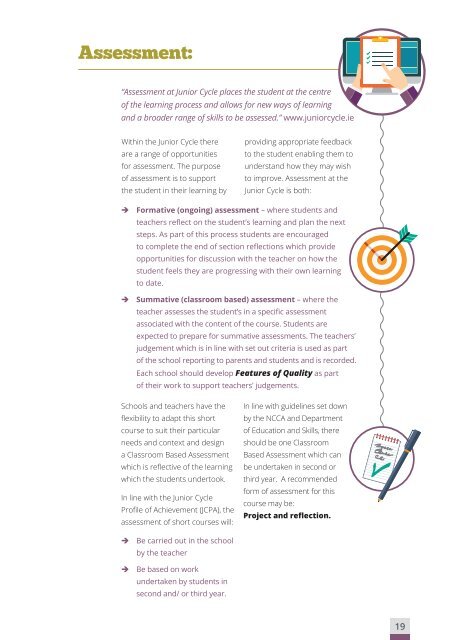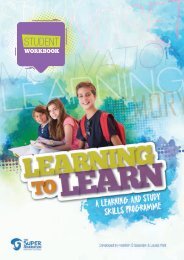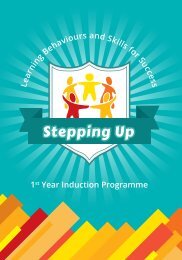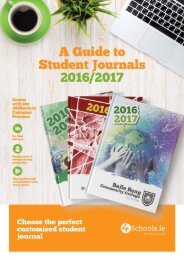Learning to Learn - Teacher Manual Introduction
The Learning to Learn programme is aimed at embedding a culture of learning and study at Junior Cycle. One of the key objectives of the Junior Cycle is to place the student at the centre of the teaching and learning. Students today are facing the challenge of ongoing changes in the nature of knowledge and the need for the requisite skills to process this increasing amount of information. This programme will assist students in knowing themselves better as learners, being more organised and confident along with having a proven study system and learning approach which will reduce their stress levels and add to their sense of well-being.
The Learning to Learn programme is aimed at embedding a culture of
learning and study at Junior Cycle. One of the key objectives of the Junior Cycle is to place the student at the centre of the teaching and learning. Students today are facing the challenge of ongoing changes in the nature of knowledge and the need for the requisite skills to process this increasing amount of information.
This programme will assist students in knowing themselves better as learners,
being more organised and confident along with having a proven study system
and learning approach which will reduce their stress levels and add to their
sense of well-being.
Create successful ePaper yourself
Turn your PDF publications into a flip-book with our unique Google optimized e-Paper software.
Assessment:<br />
“Assessment at Junior Cycle places the student at the centre<br />
of the learning process and allows for new ways of learning<br />
and a broader range of skills <strong>to</strong> be assessed.” www.juniorcycle.ie<br />
Within the Junior Cycle there<br />
are a range of opportunities<br />
for assessment. The purpose<br />
of assessment is <strong>to</strong> support<br />
the student in their learning by<br />
providing appropriate feedback<br />
<strong>to</strong> the student enabling them <strong>to</strong><br />
understand how they may wish<br />
<strong>to</strong> improve. Assessment at the<br />
Junior Cycle is both:<br />
Formative (ongoing) assessment – where students and<br />
teachers reflect on the student’s learning and plan the next<br />
steps. As part of this process students are encouraged<br />
<strong>to</strong> complete the end of section reflections which provide<br />
opportunities for discussion with the teacher on how the<br />
student feels they are progressing with their own learning<br />
<strong>to</strong> date.<br />
Summative (classroom based) assessment – where the<br />
teacher assesses the student’s in a specific assessment<br />
associated with the content of the course. Students are<br />
expected <strong>to</strong> prepare for summative assessments. The teachers’<br />
judgement which is in line with set out criteria is used as part<br />
of the school reporting <strong>to</strong> parents and students and is recorded.<br />
Each school should develop Features of Quality as part<br />
of their work <strong>to</strong> support teachers’ judgements.<br />
Schools and teachers have the<br />
flexibility <strong>to</strong> adapt this short<br />
course <strong>to</strong> suit their particular<br />
needs and context and design<br />
a Classroom Based Assessment<br />
which is reflective of the learning<br />
which the students under<strong>to</strong>ok.<br />
In line with the Junior Cycle<br />
Profile of Achievement (JCPA), the<br />
assessment of short courses will:<br />
In line with guidelines set down<br />
by the NCCA and Department<br />
of Education and Skills, there<br />
should be one Classroom<br />
Based Assessment which can<br />
be undertaken in second or<br />
third year. A recommended<br />
form of assessment for this<br />
course may be:<br />
Project and reflection.<br />
Be carried out in the school<br />
by the teacher<br />
Be based on work<br />
undertaken by students in<br />
second and/ or third year.<br />
19






